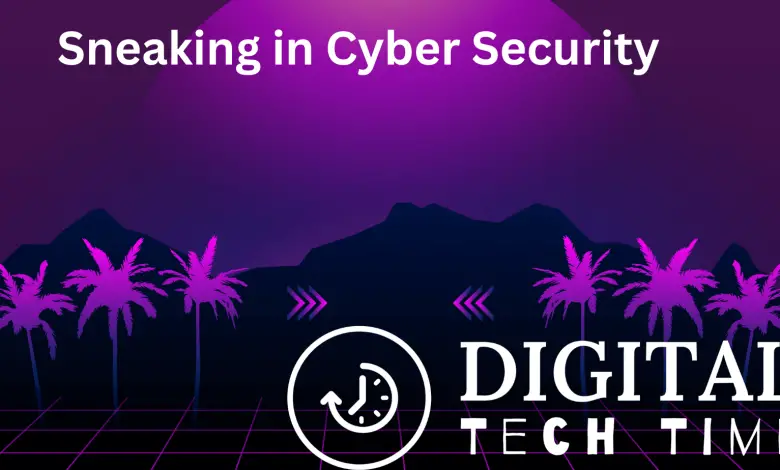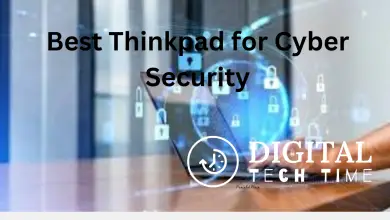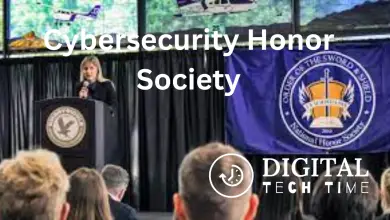Sneaking in Cyber Security: Tips for Keeping Your Business Safe Online

Sneaking in cyber security is a growing concern for businesses and individuals alike. With the increasing reliance on technology, cyber threats are becoming more prevalent than ever. Hackers are constantly looking for ways to exploit vulnerabilities in security measures to gain unauthorized access to sensitive data. The art of sneaking in cyber security is a complex process that requires a deep understanding of the underlying technology and the ability to exploit its weaknesses.
Understanding cyber security is key to preventing sneaking. Cyber security refers to the practice of protecting electronic devices, networks, and sensitive information from unauthorized access, theft, or damage. It involves implementing a range of measures to prevent cyber attacks, such as firewalls, antivirus software, and encryption. However, even with these measures in place, hackers can still find ways to bypass them and sneak in undetected.
To prevent sneaking in cyber security, it is essential to implement robust security measures and stay vigilant. This includes regularly updating software and security systems, educating employees on cyber security best practices, and monitoring networks for suspicious activity. By taking these steps, businesses and individuals can reduce the risk of cyber attacks and protect sensitive data from falling into the wrong hands.
Key Takeaways
- Cyber security is the practice of protecting electronic devices, networks, and sensitive information from unauthorized access, theft, or damage.
- Sneaking in cyber security is a complex process that requires a deep understanding of the underlying technology and the ability to exploit its weaknesses.
- To prevent sneaking in cyber security, it is essential to implement robust security measures, educate employees on best practices, and monitor networks for suspicious activity.
Understanding Cyber Security
Cybersecurity is the practice of protecting electronic information on websites, networks, or devices from unauthorized access, theft, or damage. With the increasing reliance on technology in our daily lives, cybersecurity has become more important than ever before. In this section, we will discuss the importance of cybersecurity and the different types of cyber threats.
Importance of Cyber Security
The importance of cybersecurity cannot be overstated. Cyber attacks can result in the loss of sensitive information, financial loss, and damage to an organization’s reputation. Cybersecurity measures are necessary to protect against these threats and ensure the security of electronic information.
Cybersecurity is essential for individuals, businesses, and governments. For individuals, cybersecurity measures can protect personal information such as social security numbers, credit card information, and passwords. Businesses need cybersecurity to protect their sensitive information, such as financial data, customer information, and intellectual property. Governments need cybersecurity to protect national security information and critical infrastructure.
Types of Cyber Threats
There are many types of cyber threats, and they are continually evolving. Some of the most common types of cyber threats include:
- Malware: Malware is software designed to harm a computer system or network. Malware can include viruses, worms, and Trojan horses.
- Phishing: Phishing is a type of social engineering attack that attempts to trick people into providing sensitive information, such as passwords or credit card numbers.
- Ransomware: Ransomware is a type of malware that encrypts a victim’s files and demands payment in exchange for the decryption key.
- Denial of Service (DoS) attacks: DoS attacks are designed to overwhelm a system with traffic, making it unavailable to users.
- Advanced Persistent Threats (APTs): APTs are long-term targeted attacks that are designed to gain access to sensitive information or systems over an extended period.
In conclusion, cybersecurity is essential to protect against cyber threats and ensure the security of electronic information. Individuals, businesses, and governments must take cybersecurity seriously and implement necessary measures to protect against cyber attacks.
The Art of Sneaking in Cyber Security
Cybersecurity breaches can happen in a variety of ways, and sometimes the most effective attacks are the ones that sneak in undetected. This section will cover some of the common methods that attackers use to sneak into systems and networks, including social engineering, phishing, and malware.
Social Engineering
Social engineering is the art of manipulating people into divulging sensitive information or performing actions that they wouldn’t normally do. Attackers may use a variety of tactics to trick people into giving up information, such as pretending to be someone they’re not, using scare tactics, or offering incentives.
One common example of social engineering is a phishing attack, which we will discuss in more detail below. However, attackers may also use other tactics such as pretexting, baiting, or quid pro quo. It is important to educate employees and users on how to recognize and avoid these types of attacks.
Phishing
Phishing is a type of social engineering attack that involves sending fraudulent emails or messages in an attempt to trick the recipient into divulging sensitive information or clicking on a malicious link. Phishing emails may appear to come from a legitimate source, such as a bank or a company that the recipient does business with.
To avoid falling for a phishing attack, it is important to be vigilant and skeptical of any unsolicited emails or messages. Users should always verify the source of the message and avoid clicking on any links or downloading any attachments unless they are certain that they are safe.
Malware
Malware is a type of software that is designed to damage or disable computers, networks, or other electronic devices. Malware can be delivered through a variety of methods, including phishing emails, infected websites, or malicious software downloads.
To avoid malware infections, it is important to keep software and operating systems up to date with the latest security patches and to use antivirus software. Users should also be cautious when downloading software or files from the internet and should only download from trusted sources.
In conclusion, the art of sneaking in cybersecurity is a complex and ever-evolving field. Attackers are constantly developing new tactics and methods to bypass security measures and gain access to sensitive information. By understanding the common methods that attackers use, users can take steps to protect themselves and their organizations from cyber attacks.
Cyber Security Measures
There are various measures that individuals and organizations can take to protect their digital assets from cyber threats. Some of the most effective measures include firewalls, antivirus software, and Secure Sockets Layer (SSL) certificates.
Firewalls
A firewall is a network security system that monitors and controls incoming and outgoing network traffic based on predetermined security rules. It acts as a barrier between a trusted internal network and an untrusted external network, such as the internet. Firewalls can be hardware-based or software-based and can be configured to block or allow traffic based on various criteria, such as IP address, port number, and protocol.
Firewalls are essential for protecting against various types of cyber attacks, such as Denial of Service (DoS) attacks, malware infections, and unauthorized access. They are often used in conjunction with other security measures, such as intrusion detection and prevention systems, to provide comprehensive protection.
Antivirus Software
Antivirus software is a type of security software that is designed to detect and remove malicious software, such as viruses, worms, and Trojans. It works by scanning files and programs for known patterns of malicious code and blocking or removing any threats that are detected.
Antivirus software is an essential tool for protecting against malware infections, which can cause significant damage to computer systems and networks. It is important to keep antivirus software up-to-date with the latest virus definitions to ensure that it can detect and remove the latest threats.
Secure Sockets Layer (SSL) Certificates
SSL certificates are digital certificates that are used to establish a secure connection between a web server and a web browser. They encrypt data that is transmitted between the two, making it difficult for attackers to intercept and read the data.
SSL certificates are essential for protecting sensitive data, such as passwords, credit card numbers, and other personal information, from being intercepted by attackers. They are often used by e-commerce websites, online banking systems, and other websites that handle sensitive information.
In conclusion, firewalls, antivirus software, and SSL certificates are essential measures for protecting against various types of cyber threats. By implementing these measures, individuals and organizations can significantly reduce their risk of becoming victims of cyber attacks.
Impact of Sneaking in Cyber Security
Sneaking in cyber security can have significant impacts on both businesses and individuals. In this section, we will explore the effects of sneaking in cyber security on both parties.
Business Impact
Sneaking in cyber security can have a devastating impact on businesses. It can lead to the loss of sensitive data, financial loss, and damage to the company’s reputation. According to a report by IBM, the average cost of a data breach for a company is $3.86 million. This cost includes expenses related to the investigation, notification, and legal fees.
In addition to financial loss, a data breach can also lead to a loss of customer trust. Customers are less likely to do business with a company that has experienced a data breach. This loss of trust can have long-lasting effects on the company’s bottom line.
To prevent sneaking in cyber security, businesses need to invest in robust security measures. This includes implementing firewalls, antivirus software, and other security protocols. Additionally, businesses need to educate their employees on the importance of cyber security and how to identify potential threats.
Individual Impact
Sneaking in cyber security can also have a significant impact on individuals. It can lead to identity theft, financial loss, and damage to personal reputation. According to a report by the Federal Trade Commission, there were over 4.7 million reports of identity theft in 2020 alone.
Identity theft can occur when hackers gain access to personal information, such as social security numbers, credit card numbers, and bank account information. This information can then be used to open new accounts, make fraudulent purchases, and even file tax returns.
To prevent sneaking in cyber security, individuals need to take steps to protect their personal information. This includes using strong passwords, avoiding public Wi-Fi networks, and being cautious when sharing personal information online. Additionally, individuals should monitor their credit reports regularly and report any suspicious activity immediately.
In conclusion, sneaking in cyber security can have significant impacts on both businesses and individuals. It is important for both parties to take steps to prevent cyber attacks and protect sensitive information.
Future of Cyber Security
As technology continues to evolve, so do the threats to cybersecurity. The future of cybersecurity will require a proactive, multi-layered approach to protect against a wide range of threats. Here are some of the key trends that are expected to shape the future of cybersecurity:
Artificial Intelligence and Machine Learning
Artificial Intelligence (AI) and Machine Learning (ML) are expected to play a significant role in the future of cybersecurity. AI and ML can help identify and respond to threats faster and more accurately than humans. These technologies can also be used to develop predictive models that can anticipate future threats and vulnerabilities.
Internet of Things (IoT)
The Internet of Things (IoT) is expected to continue to grow, with more devices being connected to the internet. This growth presents new challenges for cybersecurity, as these devices often have weak security protocols and are vulnerable to attacks. As a result, securing the IoT will become a critical priority for businesses and individuals.
Cloud Security
Cloud computing is becoming increasingly popular, with many businesses and individuals using cloud services to store and access data. However, this trend also presents new security challenges. As more data is stored in the cloud, the risk of data breaches and cyber attacks increases. To address this, businesses and individuals will need to implement stronger security measures and protocols.
Quantum Computing
Quantum computing is a new technology that has the potential to revolutionize the way we process and store data. However, it also presents new challenges for cybersecurity. Quantum computers can break many of the encryption algorithms that are currently used to protect data. As a result, new encryption methods will need to be developed to protect against quantum attacks.
Overall, the future of cybersecurity will require a proactive, multi-layered approach that incorporates the latest technologies and best practices. By staying ahead of emerging threats and vulnerabilities, businesses and individuals can protect themselves and their data from cyber attacks.
Frequently Asked Questions
What are some common threats to information security?
There are several common threats to information security, including malware, phishing attacks, and social engineering. Malware is a type of software designed to harm a computer system, while phishing attacks are fraudulent attempts to obtain sensitive information such as usernames, passwords, and credit card details. Social engineering is a technique used by cybercriminals to manipulate individuals into divulging sensitive information.
How do cybercriminals evade detection?
Cybercriminals use various techniques to evade detection, such as using encryption to hide their activities, disguising their IP addresses, and using legitimate software to carry out attacks. They may also use social engineering to gain access to sensitive information or use insider threats to bypass security measures.
What are some effective ways to secure a network?
There are several effective ways to secure a network, including implementing strong passwords, using two-factor authentication, regularly updating software and hardware, and implementing firewalls and intrusion detection systems. It is also important to educate employees on cybersecurity best practices and to conduct regular security audits.
What skills are necessary to succeed in a career in cyber security?
To succeed in a career in cyber security, individuals should have a strong understanding of computer systems and networks, as well as knowledge of programming languages and cybersecurity tools and techniques. Other important skills include critical thinking, problem-solving, and communication skills.
What are some common misconceptions about cyber security?
One common misconception about cyber security is that it is solely the responsibility of IT professionals. In reality, all employees have a role to play in maintaining the security of an organization’s systems and data. Another misconception is that antivirus software is sufficient to protect against all cyber threats. While antivirus software is an important part of a cybersecurity strategy, it is not a complete solution.
How can individuals protect themselves from cyber attacks?
Individuals can protect themselves from cyber attacks by using strong and unique passwords, regularly updating software and hardware, being cautious when clicking on links or downloading attachments, and using antivirus software and firewalls. It is also important to be aware of common scams and phishing attempts and to avoid sharing sensitive information online.





